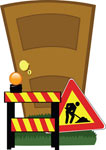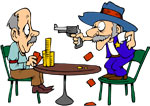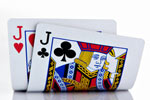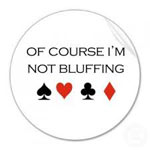Poker Tournament Strategy – The Basics
 A Poker Tournament can be broken down into clear stages all of which will require you to adapt and change your approach as the tournament progresses.
A Poker Tournament can be broken down into clear stages all of which will require you to adapt and change your approach as the tournament progresses.
But before we get into the detail of looking at how to approach each stage there are some basic principles of a good Poker Tournament Strategy that you need to understand and that is what I am going to outline in this first section.
The 4 Stages of a Poker Tournament
There are four identifiable stages that you go through when playing a Poker Tournament. The early, middle and late stages and then the Final Table.
Each stage requires an adjustment in play which we will go into more detail later on in the guide but lets go through them one by one and get an overview.
Early Stage Strategy
I’ve witnessed and played a few different strategies when playing in the early stage of a Poker Tournament. Each has its strong and weak points, but there is one that over time has proved so much more successful than the others for me.
Many players think this is the time to be loose and play lots of hands as the blinds are so low. However I don’t believe this is the case and what I will be teaching you in this strategy guide is to play extremely tight but aggressive in the early stage.
The Early stage is all about survival and cautiously building your chip stack. By playing tight and only playing good hands then you are already a strong favourite to win the hand as there are many weak players entering hands with poor cards making loose calls or raises and even pushing all in with suspect hands.
The beauty of playing Tight Aggressive is that you can let all these players take the unnecessary risks and bust one another out while you play only premium hands knowing that when you do play you are in a good position to double up or increase your chip stack.
The hard part of this early stage strategy is you don’t play a lot of hands. You will have to fold the majority of your hands. For players who like a lot of action this is very hard to do, but you must do it if you want to be successful in the Tournament.
In the Early stages of a Tournament you should be limiting yourself to only premiums hands such as AA, KK, QQ, JJ and AK. I have to admit though, that if I can enter a pot without a raise then I sometimes add a few weaker hands into the mix, such as Ax suited (looking for the nut flush), Middle to low pairs Tens and below (looking to hit a set), or suited connectors like 9-8 (looking to make a straight or flush).
I call these speculative hands because they have a low probability of hitting, but if they do then I will hold a very strong hand and have a very high chance of doubling up.
I only play them when it is cheap to do so and am looking to make my monster hand on the flop. If after the flop I haven’t made my hand or an opponent is making it too expensive to carry on then I bow out the hand graciously only having lost a small amount put in before the flop.
A word of caution with these speculative hands, don’t be tempted in if you hit something on the flop that isn’t your monster hand (flush, straight or set). Even if you are playing Ax suited and hit an ace but there is no flush draw you should be folding to any resistance. These kind of hands can get you in trouble early on in a tournament and there is a high chance that one of your opponents has a stronger Ace. Just get out of there and wait for a better opportunity.
One final golden rule for the Early Stages…. in the early stages NEVER bluff.
There are just to many weak players who will call you down. I mean how many times have you seen 2 players go all in on the first hand of a tournament. One has AA and the other K9! It always amazes me and yet I see it over and over.
So to sum up our strategy in the Early Stage, play ultra tight and don’t bluff.
Middle Stage Strategy
In the Middles stage of a Poker Tournament, the blinds will be getting a lot larger in comparison to the starting chip stack. Those players who have not managed to double up yet are starting to have to put a large proportion of their remaining stack in just as blinds. Other players will have increased their chip stack so that the blinds are still relatively small in comparison.
As you enter this stage I think it is important to recognise that a little change in style is needed, a change in gears if you will. A lot of players at this stage tend to play tighter as the thought of making the money approaches. At this stage I like to start stealing a blind or two when the opportunity presents itself because you have to be constantly thinking of building your chip stack.
In my opinion, you cannot just simply play super tight through the 3 stages because more often than not you will just bleed off chips as the blinds become bigger and bigger. Before you know it you will have to push all in probably in a less than favourable situation.
During the Middle Stages I usually like to loosen my starting hand requirements to include medium to high pairs, suited connectors, AQ, AJ and KQ. That is not to say I play these hands all the time but rather when the opportunity presents itself I will play them. Some examples of these ‘opportunities’ are when I’m on the button or in the cut off (seat before the button) or when everyone has folded to me and I’m in middle position. Position plays a big role on when I play these hands in the middle stage.
So in summary, during the middle stage of a Poker Tournament you can loosen up your super tight image created in the early stage but still maintain the folding discipline when the flop does not go your way.
Late Stage Strategy
When you arrive in the late stage of a Poker Tournament then you will be very close to the money which is called the Bubble. As you approach the bubble the next people to get eliminated from the Tournament will fill the final few places who don’t get any prize money.
Again the natural reaction to this by most players is to really tighten up and hardly play a hand. Good players (of which you will be one when you have finished this guide) take advantage of this. Now is not the time to play scared but instead to be aggressive and watch your opponents cower. Remember we are playing to win, not just scrape into the money so we are prepared to take that extra bit of risk in order to put ourselves in a position to win this thing.
If you have a short stack then you must be willing to push all in on a decent hand. Any ace with a good kicker, pairs and high suited connectors are good examples. The blinds are so high at this stage chip power becomes greater than card power in many cases. If you have a short stack don’t be content to just fold and try to slip into the money. In most cases you will bleed off your chips until you are forced to go all in with 2 8 or some junk hand. The majority of the time you will not make the money and even if you do, you will be so crippled that you will find it hard to progress any further.
If you have the chip lead or are near the chip lead it’s time to become the bully. You can loosen up even more than the middle stage and take advantage of all the players who are just waiting to make the money. You can usually steal a lot of blinds, bully the middle stacks and put the short stacks to a difficult decision for their tournament lives. Pressure, Pressure, Pressure.
This is not to say play super loose thinking no one will call you but rather keep your folding discipline when you think you are beat. Do not get involved in multi way pots. If you have a big stack flex your chip muscle but target it at one person at a time and most of all stay disciplined.
If you are at the final stage with an average stack you still want to play quite aggressive but you will want to pick your spots a bit more to try and steal a few blinds. Again don’t get involved in a multi way pot unless you have a monster hand.
Final Table Strategy
When you reach the Final Table then you can give yourself a quick pat on the back. The majority of the prize money is awarded to the Final Table. However don’t get too complacent, the majority of the money goes to the top 3 finishers so you cannot relax as you have your goal to achieve.
The Final Table will be very similar to the Late Stage, you will find some players just trying to creep up the prize money ladder and not play many hands hoping other players get knocked out first. Again you should be taking advantage of this and putting pressure on these sorts of players.
Eventually you will get to heads up between the final two players. At this stage everything changes and it is all about controlled aggression. Usually the most aggressive player in heads up will win, but you have to know the difference between aggression and stupidity!
Summary
To be a successful Poker Tournament player you must be able to change your style from stage to stage. A number of things should determine your play. Among them are what the other players at the table are doing, are there a lot of players entering flops, is it a loose table, is it a tight table? You cannot pigeon hole yourself into just one way, but you need to have a basic strategy that underlines how you play but can be adapted to the particular situation you are in at any one time.
To me that’s the attraction of poker. Each hand is different, each stage of a tournament is different, each time you play a hand there are many things to consider in a short period of time. Never let someone place a label on you. You have to be a chameleon, always changing the colour of your spots and keeping your opponent guessing.
Select the first article from the section contents below to get started.
Section Contents: Poker Tournament Strategy – The Basics
- Rebuy vs Freezeout

- Know Your Limits

- Emotion and Poker Don’t Mix

- The Secret to Making it Deep in a Poker Tournament

- Limit your Poker Starting Hands

- Remove ALL Distractions and Concentrate on the Poker Game

- Poker Tournaments Require Patience

- Controlling the Gamble in Poker Tournaments

- How to Bluff in Poker Tournaments


Trust & Security
I'll only recommend Safe & Trusted sites with a proven track record
By Game Type
Different rooms are better for different game types & stakes
Beginner Friendly
I'll find you a site with players of a similar skill level
Promotions
I'll find you the best value Promotions, Bonus & Freebies!

 Return to the
Return to the 
